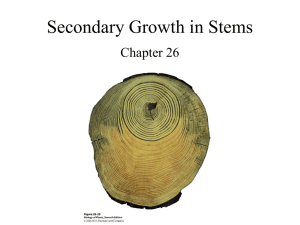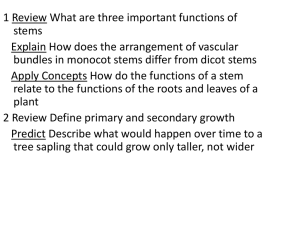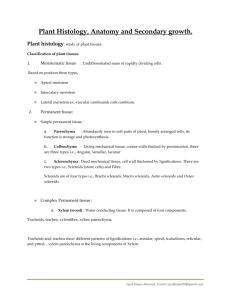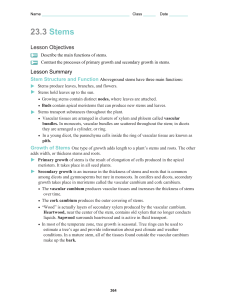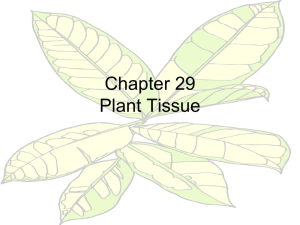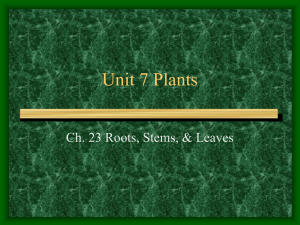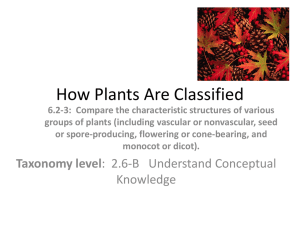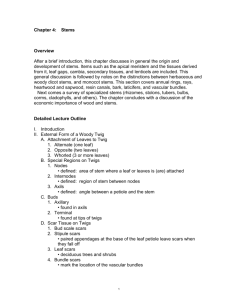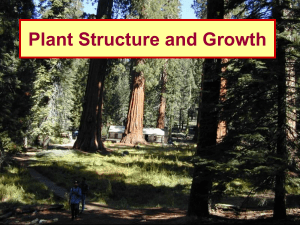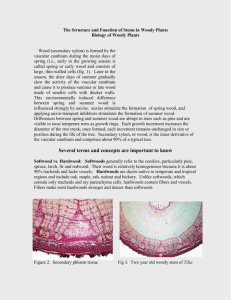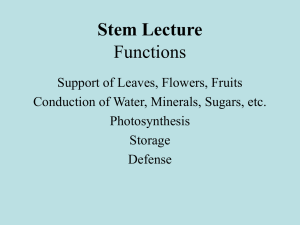23.3 Stems - OG
advertisement
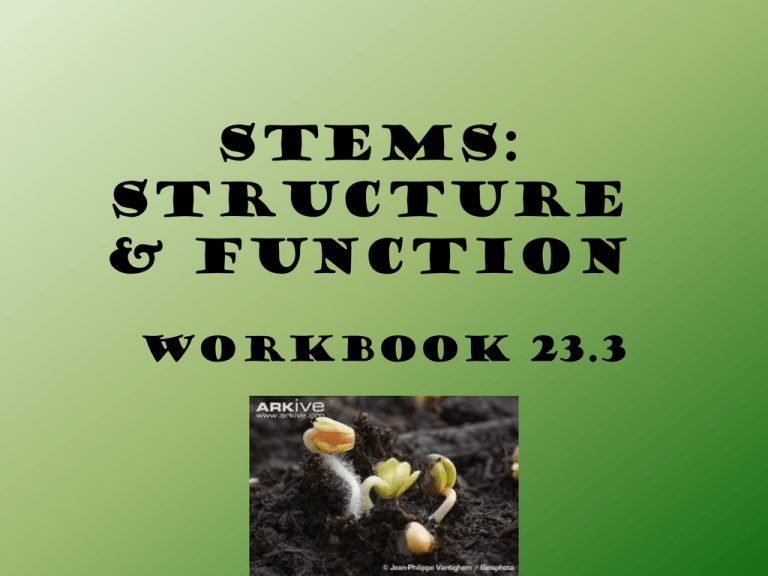
Stems: STRUCTURE & FUNCTION Workbook 23.3 Stem Structure & Function 1. What are the three main functions of stems? Stems produce organs (leaves, flowers), hold leaves up to sun, and transport materials throughout plant 2. What is an example of a stem that conducts photosynthesis and stores water? Desert cactus stem 3. What is a node? Where leaves are attached to the stem 4. What kind of plant tissue does a bud contain? Apical meristem - area of rapidly dividing cells [GROWTH!] 5. What does a vascular bundle contain? Xylem (carries water) and phloem (carries sugars) Stem cross-section Notice how the vascular bundles are arranged VASCULAR BUNDLES GROUND TISSUE EPIDERMIS CORTEX PITH COMPARE & CONTRAST CHART STRUCTURE OF MONOCOT STEMS AND DICOT STEMS SIMILARITIES COMPOSED OF VASCULAR TISSUE, GROUND TISSUE, AND EPIDERMAL TISSUE VASCULAR TISSUES ARE IN VASCULAR BUNDLES DIFFERENCES IN MONOCOTS, VASCULAR BUNDLES ARE SCATTERED IN DICOTS, VASCULAR BUNDLES ARE ARRANGED IN A RING Growth of Stems – True or False 8. Plants grow in a way that is the same as the way animals grow. False – DIFFERENT FROM 9. The # of legs an animal will have is predetermined, but the # of branches a plant will have is not predetermined. True 10. Primary growth of stems is the result of elongation of cells produced in the ground tissue False – APICAL MERISTEM 11. The increasing thickness of stems and roots in dicots and gymnosperms is called new growth False – SECONDARY 12. Secondary growth is common in monocots False - RARE 13. Dicots can grow to great heights because the increase in width supports the weight. True 14. Vascular cambium forms between the xylem and phloem of the vascular bundles True 15. In conifers and dicots, secondary growth takes place in stems and roots called vascular cambium and cork cambium False - MERISTEMS 16. The inner layers of a stem are produced by cork cambium False – OUTER COVERING 17. Stems become thicker because the cambium produces new layers of vascular tissue each year True SECONARY GROWTH (WIDTH) PRIMARY PHLOEM SECONDARY PHLOEM BARK WOOD PRIMARY XYLEM SECONDARY XYLEM 19. Most of what we call “wood” is made up of layers of SECONDARY xylem. 20. The dark wood that no longer conducts water is called HEARTWOOD . 21. The wood that is active in fluid transport is called SAPWOOD . 22. The lighter wood in tree rings contains LARGER cells with thin cell walls compared with the cells in darker wood. 23. Alternating layers of light wood and dark wood are used to estimate a tree’s AGE . FORMATION OF WOOD & BARK WOOD BARK CORK CORK CAMBIUM HEARTWOOD PHLOEM SAPWOOD VASCULAR CAMBIUM Apply the Big Idea • “Girdling” is a term that refers to removing the bark of a tree in a complete ring around the trunk or a branch. Predict the effect that girdling will have on a tree. Girdling will eventually cause parts of the tree above the injury to die. Because… - Phloem vessels are cut, so no sugars/nutrients can travel up - Photosynthesis occurring in the leaves will not be able to send sugars to the roots for food - Cork cambium will be gone and unable to replace bark which prevents tree from losing water
